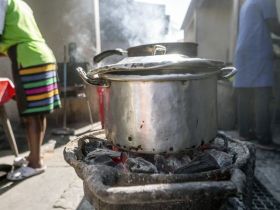Revisions to cookstove methods 'need to be aligned for level playing field'
Quantum Commodity Intelligence – All carbon crediting standards need to be in sync when improving methodologies for efficient cookstoves projects to "ensure a level playing field", otherwise developers could have incentives to pick the programme and methodology under which they can generate the most carbon credits, according to ratings agency Calyx Global and the Carbon Credit Quality Initiative (CCQI).
The duo said in a blog post on the Calyx website that current carbon crediting rules for efficient cookstoves projects come with "significant risks regarding the quantification of emission reductions, non-permanence and double counting".
They noted that some programmes, such as the Gold Standard, have already strengthened some provisions in cookstove methodologies, and others, such as Verra, are currently revising their methodology.
But, the authors warned, further revisions are needed to ensure that emission reductions are quantified conservatively
"For parameters that are associated with significant uncertainty and flexibility, such as the fraction of non-renewable biomass, methodologies could prescribe region-specific, conservative default values," the blog said.
Carbon credit overestimation
It concluded that the calculated emissions reductions from cookstoves projects are currently "very likely" to be overestimated.
"The root of the issue lies in the carbon crediting program's quantification methodologies that project developers use to calculate the emission reductions of their projects," the paper said.
It said that the basic approach taken by methodologies is to compare the amount of wood or charcoal consumed before and after installing the efficient cookstoves.
However, the calculations are being 'skewed' due to the fraction of non-renewable biomass (fNRB) included in the process, the blog said.
It said: "This is the fraction of biomass used in cookstoves that is assumed not to regrow, and thus leads to the depletion of biomass carbon stocks, such as in trees or shrubs.
"The higher this factor is, the more carbon stocks are assumed to be depleted and the larger the calculated emission reductions.
"There is a large discrepancy between the fNRB values used by voluntary carbon market projects to calculate emission reductions (typically above 80%) and the modeling results of independent researchers based on satellite data (globally about 30% on average)."
The authors concluded that this factor alone could lead to an overestimation of emission reductions by up to several hundred percentage points.
"This risk arises because estimating fNRB is associated with significant uncertainties and the quantification methodologies provide project developers a lot of flexibility in how to derive their own fNRB value," the blog said.
The authors recommended that carbon crediting methodologies prescribe using conservative default values for fNRB.
"These values should be derived from the literature and be specific to the region of the project to reflect the significant geographical differences in these values," they said.
Non-permanence and double counting
Crediting programmes should also do more to account for the risk of non-permanence and establish provisions to avoid double issuance, the blog said.
Double issuance concerns arise due to overlapping claims between cookstove and forestry projects in the same area.
By reducing the use of non-renewable biomass, cookstove projects claim emission reductions from preserving carbon stocks in nearby forests, but the same reductions might also be claimed by a project to reduce emissions from deforestation of forest degradation, it said.
"If there is no systematic check whether project areas of efficient cookstoves project overlap with forestry projects, carbon crediting programs might issue carbon credits twice for the same emission reductions," CCQI and Calyx Global said.
They said that none of the carbon crediting programmes have rules to systematically check for such overlaps.
"One possible solution could be to 'nest' cookstove projects under forestry projects that cover the same land areas," the blog added.
Non-permanence issues are also linked to the fact that cookstoves preserve carbon stocks in forests or other land areas.
"Forests are, however, inherently in jeopardy of being destroyed or degraded, and thus releasing the stored carbon back into the atmosphere, for example through land conversion or wildfires. Therefore, the effects of the projects might be reversed," the authors said.
They found that, in contrast to forestry projects, none of the carbon crediting programmes assessed by CCQI and Calyx Global "currently addresses this risk for cookstove projects".
It said the revisions to cookstoves methodologies would lead to fewer carbon credits being issued to these projects and so to cover the costs of development, buyers will thus need to pay more for each carbon credit.
"But these projects are well worth a higher price and may only continue to attract funding if the integrity issues are resolved," the paper said.
Sylvera improved cookstoves framework
Meanwhile, another carbon ratings agency Sylvera has developed a proprietary framework that it said allows for an accurate assessment of the quality and risks of cookstove projects.
Sylvera said it uses policy and regulatory datasets and country level market assessments to account for the level of financial additionality and common practice related to projects, as well as World Health Organization cooking fuel data and GIS data to estimate the risk of over-crediting.
"We also run a climatic risk model to assess the level of permanence of the biomass carbon stock that is being saved as a result of the project activity," it said.
The framework has been assessed by a review committee of academics, industry experts, project developers and customers.
More information on the framework can be found here.

